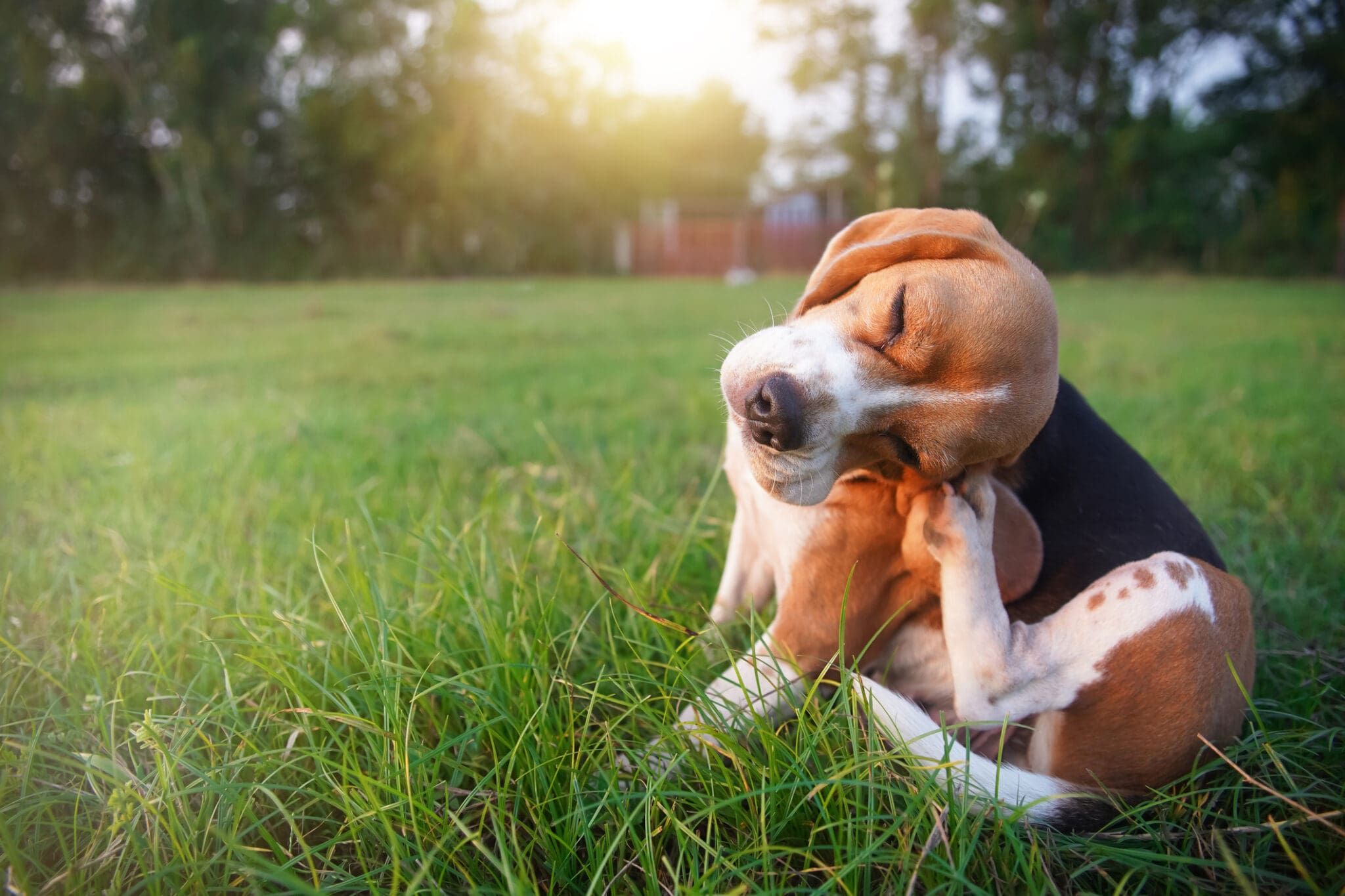Fleas are wingless blood-sucking insects that are dark brown in color and about 1 to 2 millimeters long. Although they cannot fly, they are capable of jumping on and off their host.
Fleas excrete a powdery form of the blood they ingest called frass, also known as flea dirt. Frass is used to feed flea larvae as they develop into adult fleas.
Fleas can be readily seen on most dogs by parting their fur down to the skin. You may be able to find flea dirt by running a flea comb through your dog’s fur. Flea dirt looks like fine, powdered dirt. Gently rub any dirt picked up with a flea comb on a moistened, white paper towel. Flea dirt will dissolve in water and create red streaks on the paper towel.
Symptoms of flea infestations include excessive scratching and chewing at the skin. There may be scabs on the skin where your dog has scratched or chewed, particularly on the neck, behind the ears, and at the base of the tail.
Treatment for flea infestations includes treating all of the animals in the home and treating the environment. Bathe your dog with a gentle shampoo made for dogs to reduce the flea burden. Use an oral flea treatment—such as Capstar—to help reduce the flea burden even further.
Start all of the pets in the home on a flea preventative. Some topical flea preventatives are toxic to cats and rabbits. Use only a flea preventative labeled for cats on the feline members of your family. Never use a flea preventative containing fipronil on rabbits.
It is important to treat the interior of the home for fleas. Fleas lay their eggs in the environment in which they reside and not directly on animals. This means that your carpets, the cracks between the boards of your wood floors, baseboards, and the areas under your furniture are all infested with flea eggs and larvae. Use an effective environmental treatment that kills adult fleas and contains an insect growth regulator to prevent larvae from reproducing once they become adults. You may also want to consider hiring a professional exterminator.
